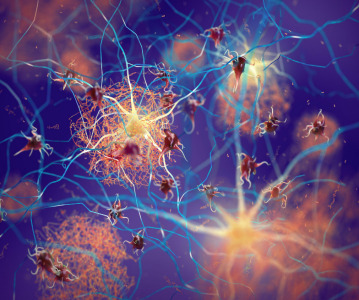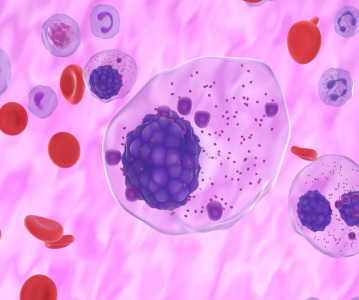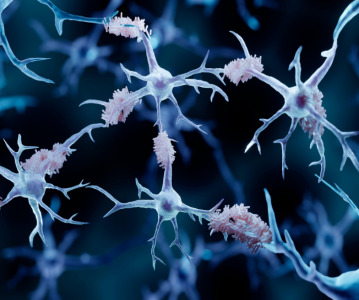Novartis drug Afinitor significantly reduces seizures in Phase III study of patients with tuberous sclerosis complex

Everolimus is the first adjunctive therapy shown in a prospective randomized Phase III study to achieve clinically significant seizure control in TSC patients.
Novartis has announced results from a Phase III study showing Afinitor (everolimus), when used as an adjunctive therapy, significantly reduced treatment-resistant seizures associated with tuberous sclerosis complex (TSC) compared to placebo. Patients in all treatment arms were also taking one to three anti-epileptic drugs (AEDs). The study, EXIST-3 (EXamining everolimus In a Study of TSC), is being presented during a plenary session at the 68th Annual Meeting of the American Academy of Neurology (AAN) (Abstract #32430, 9:00-11:00 am PST).
"Approximately 85% of individuals with TSC are affected by epilepsy at some point in their lives, yet nearly two-thirds of these patients do not achieve seizure control with available therapies, and may also experience other potentially serious consequences, such as neuropsychological, cognitive, social or learning disabilities," said Jacqueline A. French, department of neurology, NYU Langone Medical Center and lead investigator of the EXIST-3 trial. "These findings are encouraging as this is the first clinical study demonstrating benefit specifically for TSC patients who suffer from treatment-resistant seizures."
In the study, 366 patients with TSC and treatment-resistant seizures were randomized to receive targeted concentrations of everolimus titrated to Low Exposure (LE; 3-7 ng/mL; n=117) or High Exposure (HE, 9-15 ng/mL; n =130), or placebo (n=119). The percentage reduction from baseline in seizure frequency was significantly greater among patients randomized to everolimus LE (29.3%, P=0.003; confidence interval [CI]=95%) and HE (39.6%, P<0.001; CI=95%) vs placebo (14.9%; CI=95%). Seizure response rate (>=50% reduction) was also significantly greater with everolimus LE (28.2%, P=0.008; CI=95%) and HE (40.0%, P<0.001; CI=95%) vs placebo (15.1%; CI=95%). The most common (>=20%) adverse events (AEs) reported with everolimus LE/HE vs placebo included stomatitis (28.2%/30.8% vs 3.4%), mouth ulceration (23.9%/21.5% vs 4.2%), and diarrhea (17.1%/21.5% vs 5.0%). Serious AEs reported were 13.7%/13.8% vs 2.5%.
"There has been a long-standing need to find a treatment option for TSC patients that provides control of treatment-resistant seizures and we are encouraged that data from the EXIST-3 study show everolimus may have this potential," said Alessandro Riva, Global Head, Novartis Oncology Development and Medical Affairs. "Over the past decade, Novartis has remained committed to the TSC community, improving care for patients and conducting research we hope will bring us closer to addressing some of the most debilitating TSC manifestations."
Tuberous sclerosis complex is a rare genetic disorder affecting up to one million people worldwide and everolimus is the only approved non-surgical option indicated for treating non-cancerous brain and kidney tumours in certain patients with TSC. EXIST-3 study results show that everolimus is the first adjunctive therapy to achieve clinically significant seizure control in TSC patients and will be the basis for discussion with health authorities worldwide.
Everolimus works by inhibiting the mammalian target of rapamycin (mTOR), a protein that regulates multiple cellular functions. TSC is caused by mutations in the TSC1 or TSC2 genes, resulting in hyperactive signaling of the mTOR pathway which can lead to increased cellular growth and proliferation, neuronal hyper-excitability, abnormalities in cortical architecture and network function and impaired synaptic plasticity. Pre-clinical research suggests that hyperactive mTOR activity may influence several mechanisms of epileptogenesis, the gradual process by which the brain develops epilepsy.
Related News
-
News BioNTech to begin mRNA vaccine manufacturing in Rwanda by 2025
German biotechnology company BioNTech has stated their intentions to begin production at their mRNA vaccine factory in Rwanda by 2025, which will mark the first foreign mRNA vaccine manufacturing site on the continent of Africa. -
News Identifying Alzheimer’s Disease biomarker proteins with whole blood tests
A University of Manchester spin-out pharmaceutical company, PharmaKure, has reported successful study results for the quantification of Alzheimer’s Disease biomarker proteins with a whole blood test. -
News Bill & Melinda Gates Foundation to boost mRNA vaccine initiatives in Africa with USD $40m
To address vaccine inequality and accessibility issues, the Bill & Melinda Gates Foundation aims to deliver USD $40m to various biotech companies and vaccine manufacturers in support of mRNA vaccine development. -
News CPHI Podcast Series: Exploring neurological frontiers in Alzheimer's and beyond
The next episode of the CPHI Podcast Series delves into the science and background behind some recent developments in the field of Alzheimer's disease and neurological disorders. -
News Is patient centricity the future of pharmaceutical manufacturing?
In this interview with Sandra Sánchez y Oldenhage, President of PharmAdvice, she speaks to the importance of considering patients in the manufacturing stages of the pharmaceutical supply chain, and how it can redefine healthcare. -
News CPHI Podcast Series: How to leverage AI for Drug Discovery
Artificial intelligence is the topic of debate in the latest episode from the CPHI Podcast Series, where Digital Editor Lucy Chard speaks with Bill Whitford of DPS Group about the integration of AI in healthcare. -
News Pfizer forges ahead with blood cancer therapy after approval from FDA
Pfizer gains accelerated approval from the US FDA for their new bispecific antibody therapy for multiple myeloma, set to address an unmet need for patients. -
News Alzheimer's drug donanemab deemed effective in landmark clinical trial
Results from the TRAILBLAZER-ALZ 2 Randomised Clinical Trial into the use of donanemab to treat early symptoms of Alzheimer’s disease have been analysed.
Position your company at the heart of the global Pharma industry with a CPHI Online membership
-
Your products and solutions visible to thousands of visitors within the largest Pharma marketplace
-
Generate high-quality, engaged leads for your business, all year round
-
Promote your business as the industry’s thought-leader by hosting your reports, brochures and videos within your profile
-
Your company’s profile boosted at all participating CPHI events
-
An easy-to-use platform with a detailed dashboard showing your leads and performance







